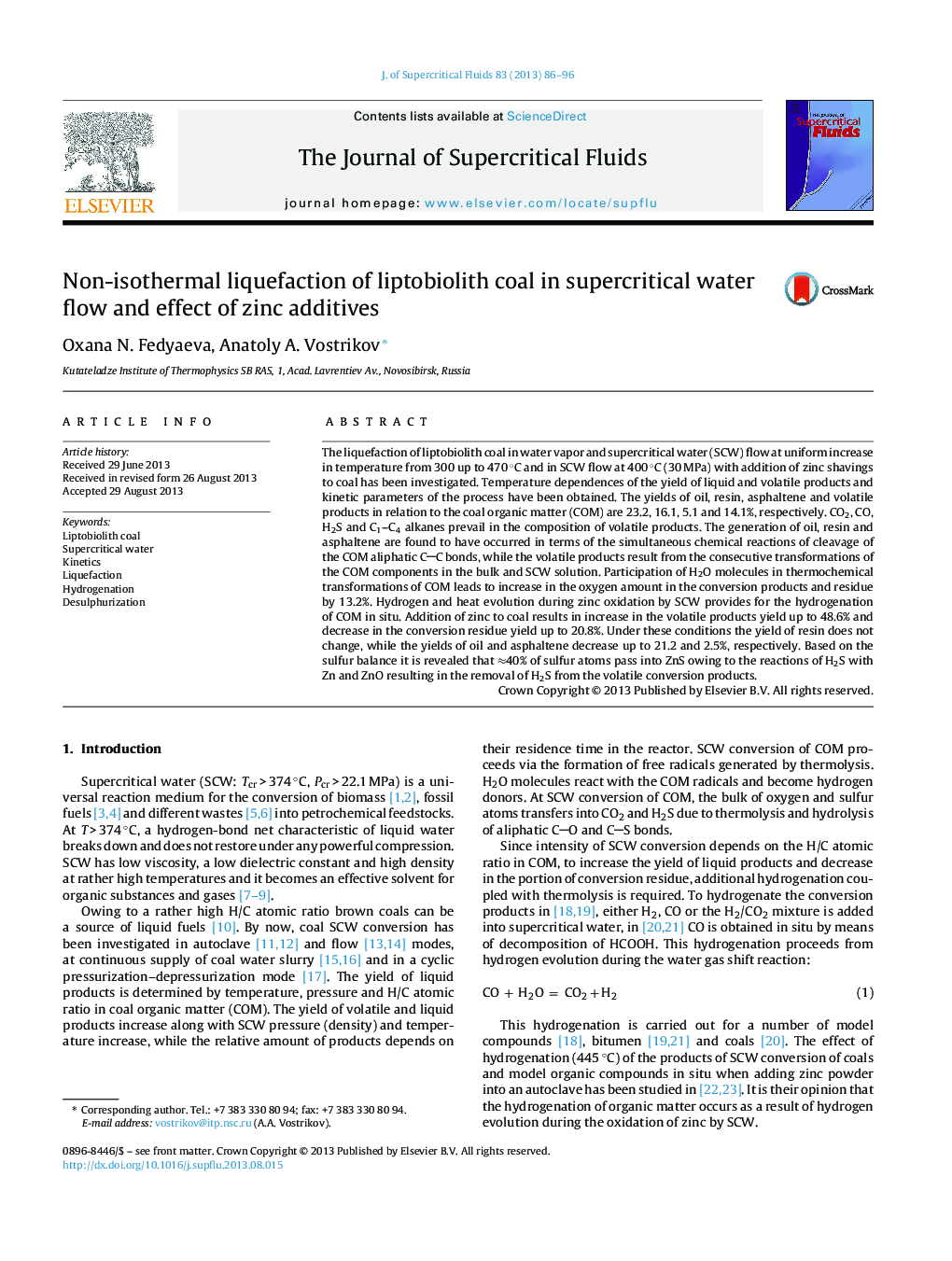| کد مقاله | کد نشریه | سال انتشار | مقاله انگلیسی | نسخه تمام متن |
|---|---|---|---|---|
| 230585 | 1427394 | 2013 | 11 صفحه PDF | دانلود رایگان |

• SCW conversion of liptobiolith coal under non-isothermal conditions has been studied.
• A maximum yield of oil is observed at 435–465 °C.
• Generation of oil, resin and asphaltene occurs in terms of the simultaneous chemical reactions.
• Volatile products results from consecutive transformations of coal organic matter in SCW.
• Conversion with Zn addition results in higher yield of lower hydrocarbons and causes desulphurization of products.
The liquefaction of liptobiolith coal in water vapor and supercritical water (SCW) flow at uniform increase in temperature from 300 up to 470 °C and in SCW flow at 400 °C (30 MPa) with addition of zinc shavings to coal has been investigated. Temperature dependences of the yield of liquid and volatile products and kinetic parameters of the process have been obtained. The yields of oil, resin, asphaltene and volatile products in relation to the coal organic matter (COM) are 23.2, 16.1, 5.1 and 14.1%, respectively. CO2, CO, H2S and C1–C4 alkanes prevail in the composition of volatile products. The generation of oil, resin and asphaltene are found to have occurred in terms of the simultaneous chemical reactions of cleavage of the COM aliphatic CC bonds, while the volatile products result from the consecutive transformations of the COM components in the bulk and SCW solution. Participation of H2O molecules in thermochemical transformations of COM leads to increase in the oxygen amount in the conversion products and residue by 13.2%. Hydrogen and heat evolution during zinc oxidation by SCW provides for the hydrogenation of COM in situ. Addition of zinc to coal results in increase in the volatile products yield up to 48.6% and decrease in the conversion residue yield up to 20.8%. Under these conditions the yield of resin does not change, while the yields of oil and asphaltene decrease up to 21.2 and 2.5%, respectively. Based on the sulfur balance it is revealed that ≈40% of sulfur atoms pass into ZnS owing to the reactions of H2S with Zn and ZnO resulting in the removal of H2S from the volatile conversion products.
Figure optionsDownload as PowerPoint slide
Journal: The Journal of Supercritical Fluids - Volume 83, November 2013, Pages 86–96